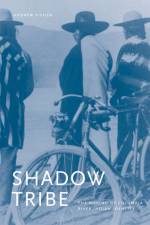337
The Manhattan ProjectΓÇöthe World War II race to produce an atomic bombΓÇötransformed the entire country in myriad ways, but it did not affect each region equally. Acting on an enduring perception of the American West as an ΓÇ£emptyΓÇ¥ place, the U.S. government located a disproportionate number of nuclear facilitiesΓÇöparticularly the ones most likely to spread pollutionΓÇöin western states. The Manhattan Project manufactured plutonium at Hanford, Washington; designed and assembled bombs at Los Alamos, New Mexico; and detonated the worldΓÇÖs first atomic bomb at Alamagordo, New Mexico, on June 16, 1945.In the years that followed the war, the U.S. Atomic Energy Commission selected additional western sites for its work. Many westerners initially welcomed the atom. Like federal officials, they, too, regarded their region as ΓÇ£empty,ΓÇ¥ or underdeveloped. Facilities to make, test, and base atomic weapons, sites to store nuclear waste, and even nuclear power plants were regarded as assets. By the 1960s and 1970s, however, regional attitudes began to change. At a variety of locales, ranging from Eskimo Alaska to Mormon Utah, westerners devoted themselves to resisting the atom and its effects on their environments and communities. Just as the atomic age had dawned in the American West, so its artificial sun began to set there.The Atomic West brings together contributions from several disciplines to explore the impact on the West of the development of atomic power from wartime secrecy and initial postwar enthusiasm to public doubts and protest in the 1970s and 1980s. An impressive example of the benefits of interdisciplinary studies on complex topics, The Atomic West advances our understanding of both regional history and the history of science, and does so with human communities as a significant focal point. The book will be of special interest to students and experts on the American West, environmental history, and the history of science and technology.




